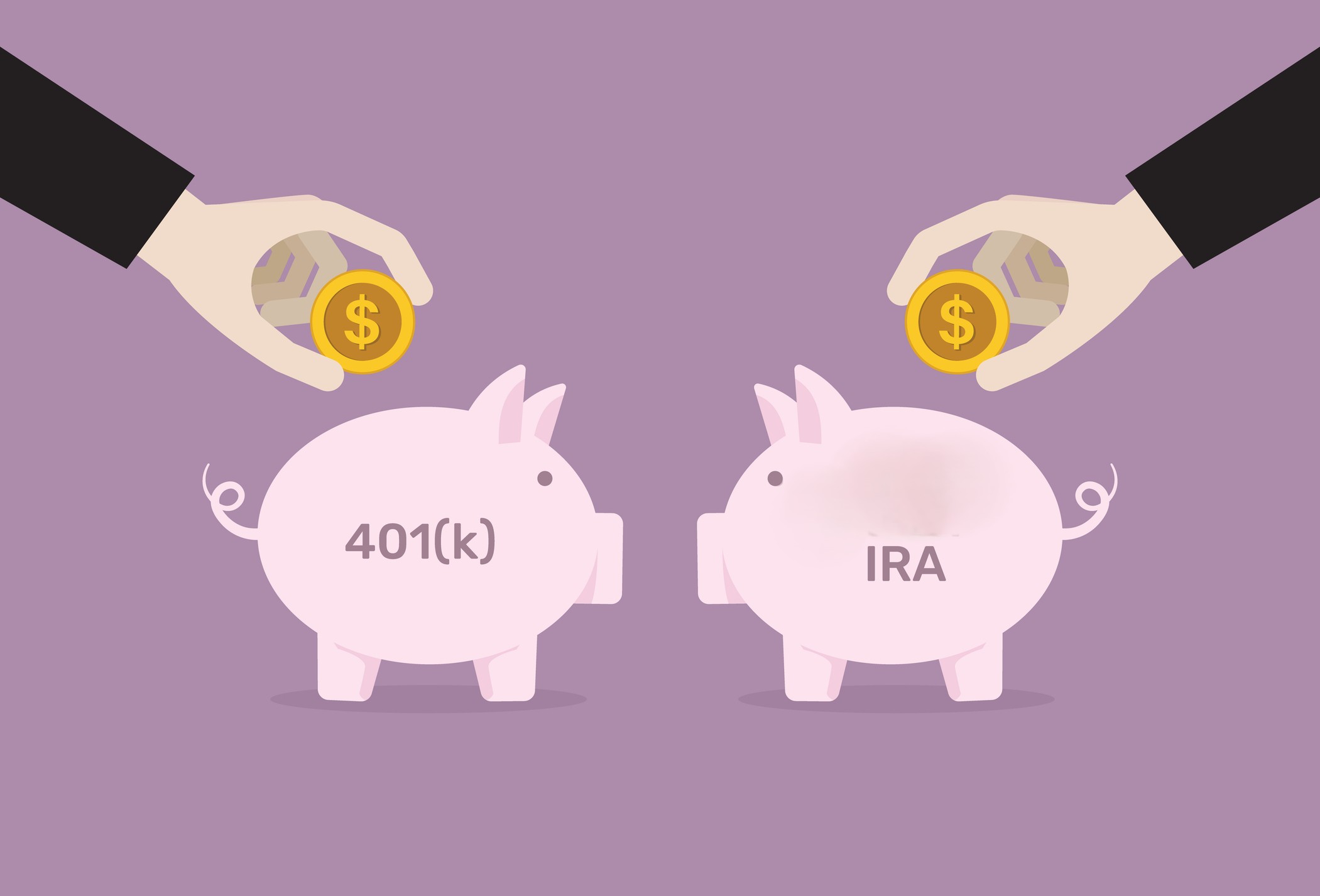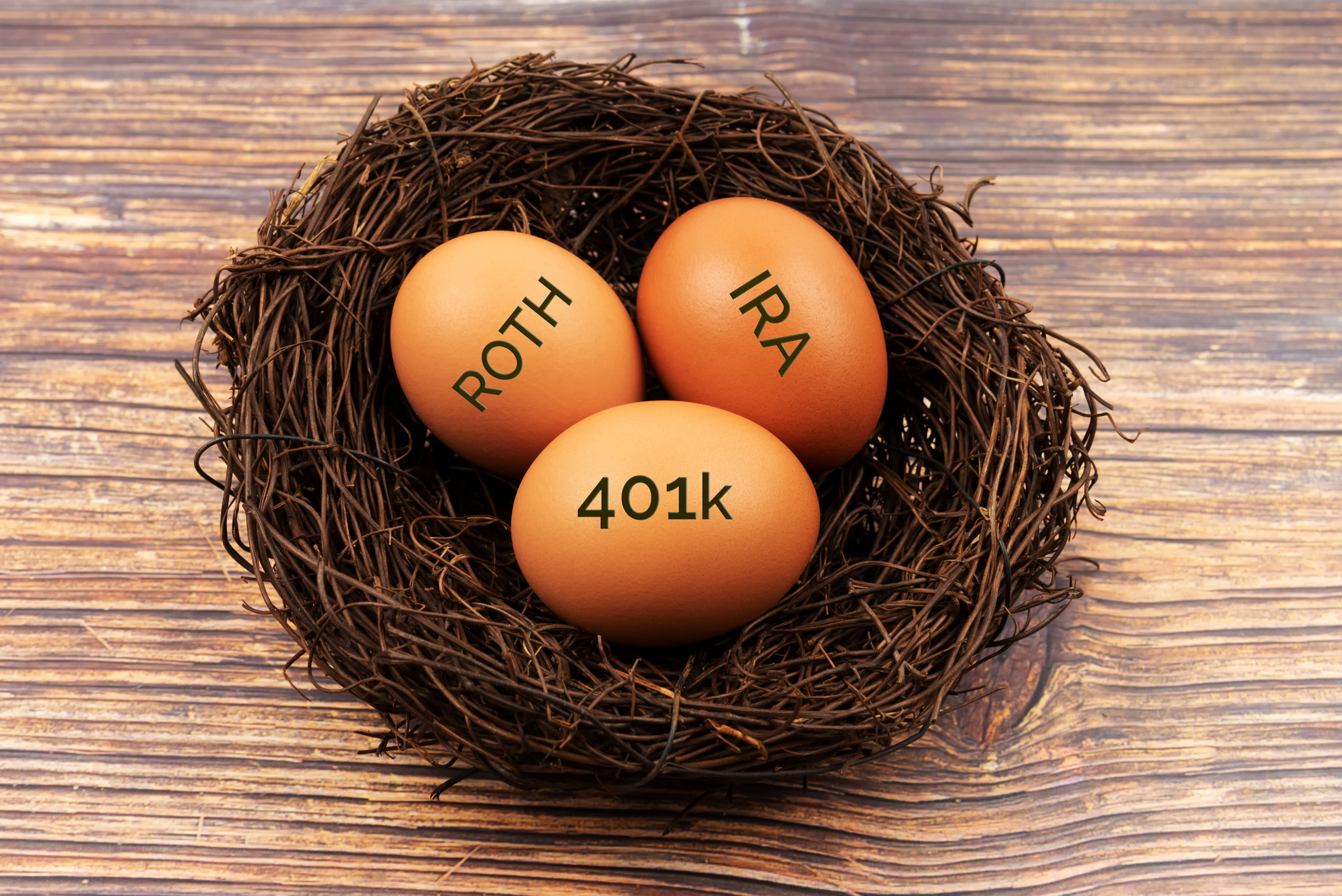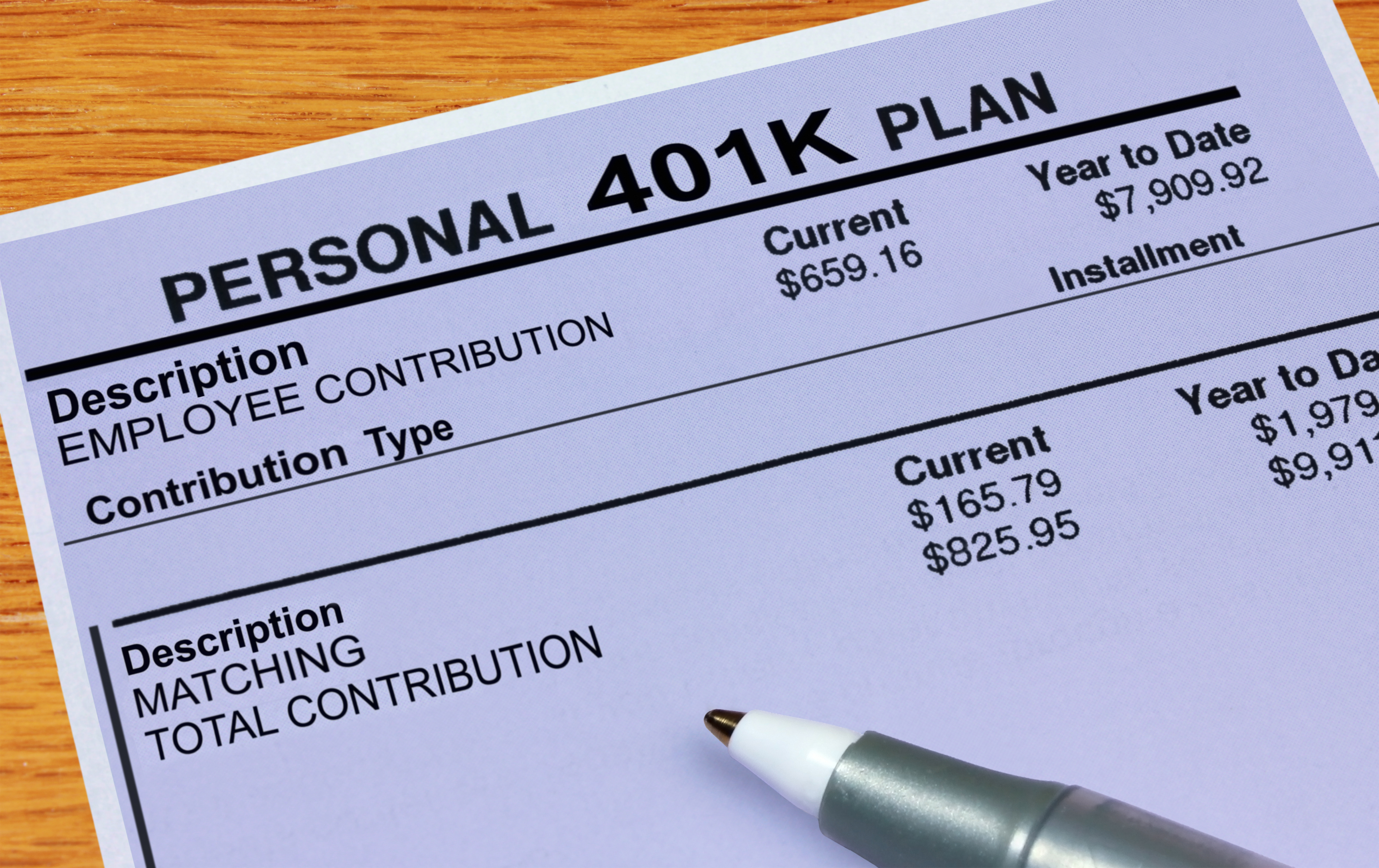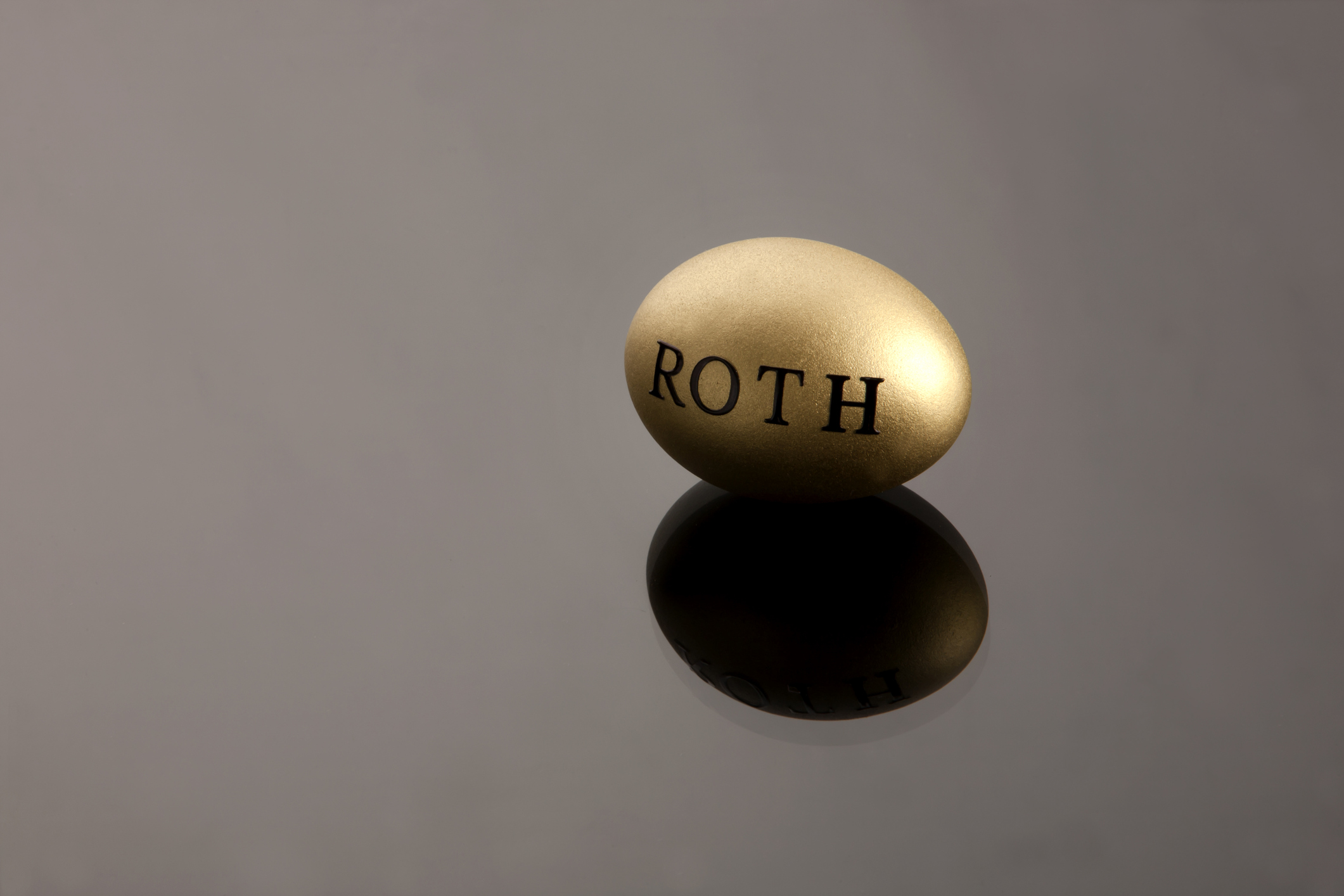IRA vs. 401(k): Should You Pick One — or Both?
An IRA or 401(k) can help you supercharge your retirement savings. We'll help you pick one or opt for both.


If you are trying to decide between an IRA vs. 401(k), count yourself lucky. Not everyone's employer offers 401(k)s, and many working people feel too cash-strapped to contribute to a retirement account. And that's a shame — because these popular accounts act as powerful, tax-advantaged ways to save toward retirement. Given common concerns about the Social Security trust fund, which is projected to run out of money as early as 2033, IRAs and 401(k)s are even more crucial for a secure retirement.
While they share many characteristics, there are also key distinctions to be aware of when comparing an IRA vs. 401(k). For example, many 401(k) plans offer an employer match up to a certain amount, while IRAs lack this feature. If you understand these similarities and differences, you can compare them to determine the best way to save based on your circumstances and goals.

IRA vs. 401(k) — or both?
Here's the good news: you don’t have to choose between an IRA or a 401(k). It’s perfectly fine to use both. After comparing the features of each plan, you may elect to save a portion of your paycheck in a 401(k) but contribute additional money to an IRA. Or you may decide to contribute the maximum amount to each.
From just $107.88 $24.99 for Kiplinger Personal Finance
Become a smarter, better informed investor. Subscribe from just $107.88 $24.99, plus get up to 4 Special Issues

Sign up for Kiplinger’s Free Newsletters
Profit and prosper with the best of expert advice on investing, taxes, retirement, personal finance and more - straight to your e-mail.
Profit and prosper with the best of expert advice - straight to your e-mail.
Do you have access to a plan?
The first difference lies in who may be eligible for each type of plan.
401(k)s are employer-provided. To open a 401(k), you need to work for an employer that sponsors one and qualify for participation based on their criteria. Generally, if you are at least 21 and have worked with that employer for at least a year, then you qualify.
IRA stands for an individual retirement account. That “individual” part means you can open one independently, unrelated to your employer. However, you can only contribute to an IRA with earned income, such as wages, salaries, tips, bonuses, commissions, and self-employment income.
If you are married, consider opening a spousal IRA if you or your spouse qualifies.
If you are self-employed, you still have choices. For example, you might opt for a SEP IRA or a solo 401(k).
Contribution limits
Every year, the IRS sets contribution limits for IRA and 401(k) accounts, usually with some changes to account for inflation.
IRAs. You can contribute a maximum of $7,000 in 2025. Catch-up contributions for taxpayers 50 and older are limited to $1,000, for a total contribution of $8,000. These numbers are unchanged from 2024.
401(k)s. Eligible savers can contribute $23,500 to these accounts in 2025, up from $23,000 in 2024. Savers between 50 and 59, or over 63, may make catch-up contributions of $7,500 2025 for a total contribution limit of $31,500 in 2025.
There's exciting news for those aged 60-63 in 2025. The "super catch-up" provision allows them to contribute an additional $11,250 instead of $7,500 allowing then to contribute $34,750 in total for 2025.

Matching contributions
Employers can also contribute to your 401(k) account through matching contributions, and many do. This additional money provides a powerful boost to your savings; with careful planning, you might even become a 401(k) millionaire. So, when available, it is usually best to prioritize saving in your 401(k) until you receive every matching dollar you can. Each employer has their own matching formula, but all follow the same general format in which they match a portion of your contributions up to a maximum percentage of your salary.
For example, your employer may provide a 50% match up to 10% of your salary. Assume you make $100,000. For every dollar you contribute up to $10,000, your employer will contribute an additional 50 cents. So you could receive an extra $5,000 per year just for saving. After 25 years, that would amount to an additional $365,000, assuming your account earns 8% annually.
There's no match option with an IRA. However, two fintech firms are offering to match IRA contributions. Robinhood promises to match 1% of IRA contributions for regular customers and up to 3% for those who pay an additional annual fee as "Gold" members. SoFi offers a 1% match for IRA rollovers and contributions. However, before you open an IRA with these companies, ensure they have the investments you'd like to put in your IRA and check for fees and limitations. You may be better able to build IRA wealth through smart investment choices than a match.
Tax deductions
One of the main advantages of retirement accounts is the tax benefits they provide. This includes the ability to deduct your contributions and defer paying income tax until withdrawal.
However, if your employer offers a retirement plan, you may not be able to deduct your IRA contributions depending on your income (as determined by your modified adjusted gross income (MAGI) and filing status.
| Header Cell - Column 0 | Full deduction | Partial Deduction | No deduction |
|---|---|---|---|
Single | $79,000 or less | Between $79,000 and $89,000 | $89,000 and higher |
Married filing jointly | $126,000 or less | $126,000 and $146,000 | $146,000 and higher |
| Header Cell - Column 0 | Full deduction | Partial Deduction | No deduction |
|---|---|---|---|
Single | Deduction up to the amount of your contribution limit | N/A | N/A |
Married filing jointly with a spouse who is not covered by a plan at work | Deduction up to the amount of your contribution limit | N/A | N/A |
Married filing jointly with a spouse who is covered by a plan at work | Less than $236,000 | more than $236,000 but less than $246,000 | more than $246,000 |
You can always get the tax benefit of your traditional 401(k) contributions regardless of your income. Income tax rates are progressive, so higher earners benefit more from deductions. Consider your income and deductibility of contributions if you are covered by a 401k.

Roth IRA vs Roth 401(k): Income Limits
Another income limit that can hinder your IRA savings is the Roth IRA income limit. Roth IRAs have the potential to be very valuable, but you can only contribute to a Roth IRA if your income falls below certain thresholds.
| Header Cell - Column 0 | Full contribution | Partial contribution | No contribution |
|---|---|---|---|
Single | Less than $150,000 | $150,000 to $165,000 | $165,000 or higher |
Married filing jointly | Less than $236,000 | $236,000 to $246,000 | $246,000 or higher |
However, many 401(k) plans also provide Roth options. Your income does not affect your Roth 401(k) contributions. As long as you work for an employer that offers one, you can contribute to a Roth 401(k) regardless of how much money you make.
Early withdrawals
If you withdraw from a tax-deferred retirement account (traditional IRAs or 401Ks) before you reach 59-½, you usually are subject to a 10% penalty on top of regular income tax. However, with a traditional 401(k), you may be able to take advantage of the rule of 55. If written into your plan’s documents, it provides an exception to the early withdrawal penalty if you retire at 55 or later. This rule does not apply to IRA withdrawals.
You may withdraw penalty-free from Roth IRA and 401(k) accounts if you withdraw from the amount you contributed, not on investment gains. This extra layer of flexibility means you can fall back on a Roth account in an emergency.
The rules for early withdrawal from IRAs and 401(k)s are complex. If you are tempted to go this route, run your plan by a financial planner or tax adviser to ensure you won't be penalized.

Investment options
Your investment choices inside a 401(k) will be limited, typically to a specific list of mutual funds. Depending on the choices available, you may not be able to create the portfolio you’d like within a 401(k). With an IRA you’ll often have access to a much wider range of investments to include stocks, bonds, mutual funds, and ETFs. You can also add Treasury bonds, bills and notes to an IRA.
| Header Cell - Column 0 | IRA | 401(k) |
|---|---|---|
Who has access? | Anyone can open an IRA | Employees of companies that offer one. |
How much can you contribute? | $7,000 if under 50 $8,000 if 50 or older | $23,500 if under 50, $7,500 catch-up contributions (total $31,000 in 2025) if 50 or older. Super catch-up if 60 - 63 starting in 2025. |
Employer matching? | No | Yes |
Can I deduct contributions? | Yes - but may be limited | Yes, but only on traditional 401(k)s. |
Roth Income Limit? | Yes | No |
Early withdrawal penalty? | Yes (though Roth IRAs will allow for withdrawals of contributions, not earnings) | Yes (though rule of 55 and other exceptions may apply for traditional 401(k)s and Roths allow for withdrawal of contributions) |
Investment Options | Open | Limited |
Read More About Retirement Savings
Profit and prosper with the best of Kiplinger's advice on investing, taxes, retirement, personal finance and much more. Delivered daily. Enter your email in the box and click Sign Me Up.

Brandon Renfro, Ph.D., CFP®, RICP®, EA, is a financial advisor with Belonging Wealth Management in Longview, Texas. He specializes in assisting pre-retirees and retirees with tax-efficient retirement planning and income distribution strategies. With over a decade of experience in teaching and practicing financial planning, Brandon has been featured in publications such as The Wall Street Journal, Forbes, AARP, Business Insider, and the Journal of Financial Planning. Brandon serves as an Infantry Officer in the Arkansas Army National Guard.
- Ellen B. KennedyRetirement Editor, Kiplinger.com
- Donna LeValleyRetirement Writer
-
 December Fed Meeting: Live Updates and Commentary
December Fed Meeting: Live Updates and CommentaryThe December Fed meeting is one of the last key economic events of 2025, with Wall Street closely watching what Chair Powell & Co. will do about interest rates.
-
 This Is Why Investors Shouldn't Romanticize Bitcoin
This Is Why Investors Shouldn't Romanticize BitcoinInvestors should treat bitcoin as the high-risk asset it is. A look at the data indicates a small portfolio allocation for most investors would be the safest.
-
 I'm a Federal Benefits Pro: I Answer These 2 Questions a Lot
I'm a Federal Benefits Pro: I Answer These 2 Questions a LotMany federal employees ask about rolling a TSP into an IRA and parsing options for survivor benefits, both especially critical topics.
-
 I'm a Financial Pro Focused on Federal Benefits: These Are the 2 Questions I Answer a Lot
I'm a Financial Pro Focused on Federal Benefits: These Are the 2 Questions I Answer a LotMany federal employees ask about rolling a TSP into an IRA and parsing options for survivor benefits, both especially critical topics.
-
 I Retired at 63 to Enjoy My Free Time but My Grown Kids Want Help With Childcare. I Love My Grandkids but It's Too Much. What Should I Do?
I Retired at 63 to Enjoy My Free Time but My Grown Kids Want Help With Childcare. I Love My Grandkids but It's Too Much. What Should I Do?We asked therapists and relationship experts for advice.
-
 5 RMD Mistakes That Could Cost You Big-Time: Even Seasoned Retirees Slip Up
5 RMD Mistakes That Could Cost You Big-Time: Even Seasoned Retirees Slip UpThe five biggest RMD mistakes retirees make show that tax-smart retirement planning should start well before you hit the age your first RMD is due.
-
 I'm a Wealth Adviser: My 4 Guiding Principles Could Help You Plan for Retirement Whether You Have $10,000 or $10 Million
I'm a Wealth Adviser: My 4 Guiding Principles Could Help You Plan for Retirement Whether You Have $10,000 or $10 MillionRegardless of your net worth, you deserve a detailed retirement plan backed by a solid understanding of your finances.
-
 A Retirement Triple Play: These 3 Tax Breaks Could Lower Your 2026 Bill
A Retirement Triple Play: These 3 Tax Breaks Could Lower Your 2026 BillGood news for older taxpayers: Standard deductions are higher, there's a temporary 'bonus deduction' for older folks, and income thresholds have been raised.
-
 10 New Year's Resolutions for Retiring Next Year
10 New Year's Resolutions for Retiring Next YearThese New Year's resolutions will help you retire in 2026 with confidence in your financial strategy.
-
 Think You Know How to Be Happy in Retirement? These 9 Stats May Surprise You
Think You Know How to Be Happy in Retirement? These 9 Stats May Surprise YouWhen it comes to your retirement happiness, don't believe everything you hear. We've turned to solid research for the facts on finding your bliss in retirement.
-
 If You're Retired or Soon-to-Be Retired, You Won't Want to Miss Out on These 3 OBBB Tax Breaks
If You're Retired or Soon-to-Be Retired, You Won't Want to Miss Out on These 3 OBBB Tax BreaksThe OBBB offers some tax advantages that are particularly beneficial for retirees and near-retirees. But they're available for only a limited time.